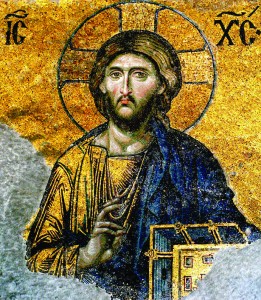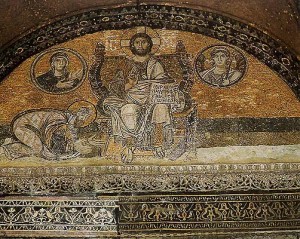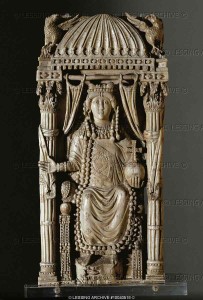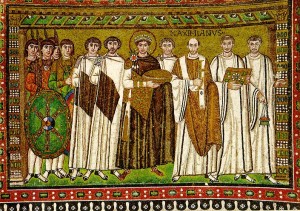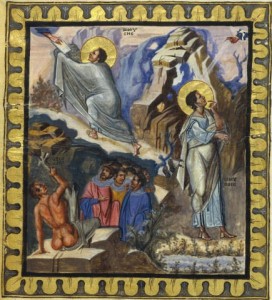When I tell people that I study Byzantine art they are usually kind of confused. It is understandable. Before I took a class on Byzantine art in the fall of my junior year I only had a very vague idea of what Byzantium was. I knew it had to do with Eastern Europe, I knew there were mosaics and I was pretty sure Constantine was involved somehow. Beyond that however, I was not exactly interested in or aware of what went on during the empire’s more than 1,000 year existence. Yes that’s right, the Byzantine Empire lasted over 1,000 years (but you would never know that from the coverage it gets Western civ. classes)!
I’m not sure why they don’t teach more about the Byzantine Empire in school, so I have to educate friends and acquaintances about it myself. I usually start by asking if they know who Constantine is, and then gauge the direction I need to go from there. It makes sense that I would be interested in Byzantium, because I have always been kind of a contrarian who liked things no one else cared about. I love arguing the other side of an issue just to see if I can, and I have always had somewhat obscure hobbies and interests compared to my friends. I guess it would make sense that I love studying something that has prompted people to say, “I didn’t know that was a thing.” That being said, I really think that Byzantine art is amazing, and in this short space I will try to begin to tell you why.
A lot of the art produced in the Byzantine Empire parallels the works that came out of Western Europe during the same period. Both cultures produced works such as manuscripts and ivories that dealt with imperial and religious subject matter. It is in terms of style that the main differences between the two cultures become clear. Mosaics are probably the best known and most popular form of art to come out of Byzantium. Byzantine mosaics are known for their high artistic quality and use of magnificent gold tiles. My “Greatest Hits of Byzantium” list would include:
Hagia Spohia – Constantinople
– Hagia Sophia – Chirst Mosaic ca. 1260s (The most famous mosaic)
– Hagia Sophia – Repentant Emperor late 9th century (My favorite mosaic!)
Ivory of Empress Ariadne ca. 5th century
San Vitale Mosaics, Ravenna – mid 6th century
Icon of Christ ca. 6th century (The oldest surviving icon of its kind)
David Plates ca. 630
Paris Psalter 10th century
(Please note that this list is only a glimpse into Byzantine art, and heavily skewed towards my personal favorites. I also don’t own any of these images)
If the above works did not speak for themselves and you are still wondering how I became interested in Byzantine art, I can elaborate. The Paris Psalter was my gateway into Byzantine art. I won’t go into excruciating specifics, but I was fascinated by its evidence of a seemingly random, hundred-year revival of classicism in Byzantine art. Dubbed the “Macedonian Renaissance” by a twentieth century scholar, the period witnessed a revived popularity of classical themes and motifs in Byzantine art and literature.
When I applied for a summer research grant to study the manuscript I was mostly interested in the relationship between its classical and Old Testament themes. Over the course of the summer, I came to see the manuscript as a sort of jumping off point for what has become a broader art historical interest of mine: problematization of the “renaissance” and classicism. I became fascinated by the Paris Psalter and its status as an object of the so-called “Macedonian Renaissance.” The Macedonian Renaissance is interesting because it represents a short and isolated period in which classicism briefly regained and then lost popularity. Unlike the Italian Renaissance, classicism did not triumphantly squash out earlier “medieval” representational styles. What makes this interesting to a scholar of art history is that it can be used to call question to the privilege that is given to the reappearance of classicism and periods of “renaissance” throughout art. During the tenth century, the reappearance of Greco-Roman themes and motifs was not a manifestation of classical humanism’s triumph over the “dark ages.” Instead, it was arguably a momentary popularization of themes that were only popular with a small cultural elite.
If all of that was confusing, don’t worry – I am still trying to figure it all out for myself! I do hope that what you did get out of this was an introduction to all things Byzantium and a measure of understanding as to why I love Byzantine art so much.


